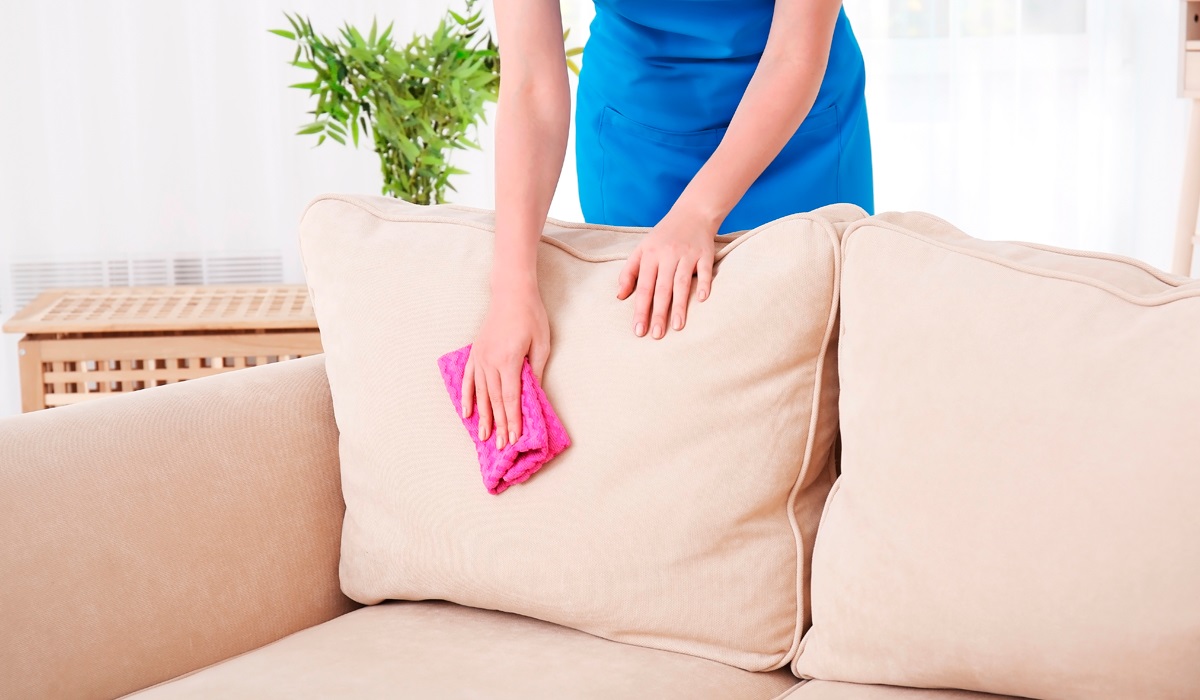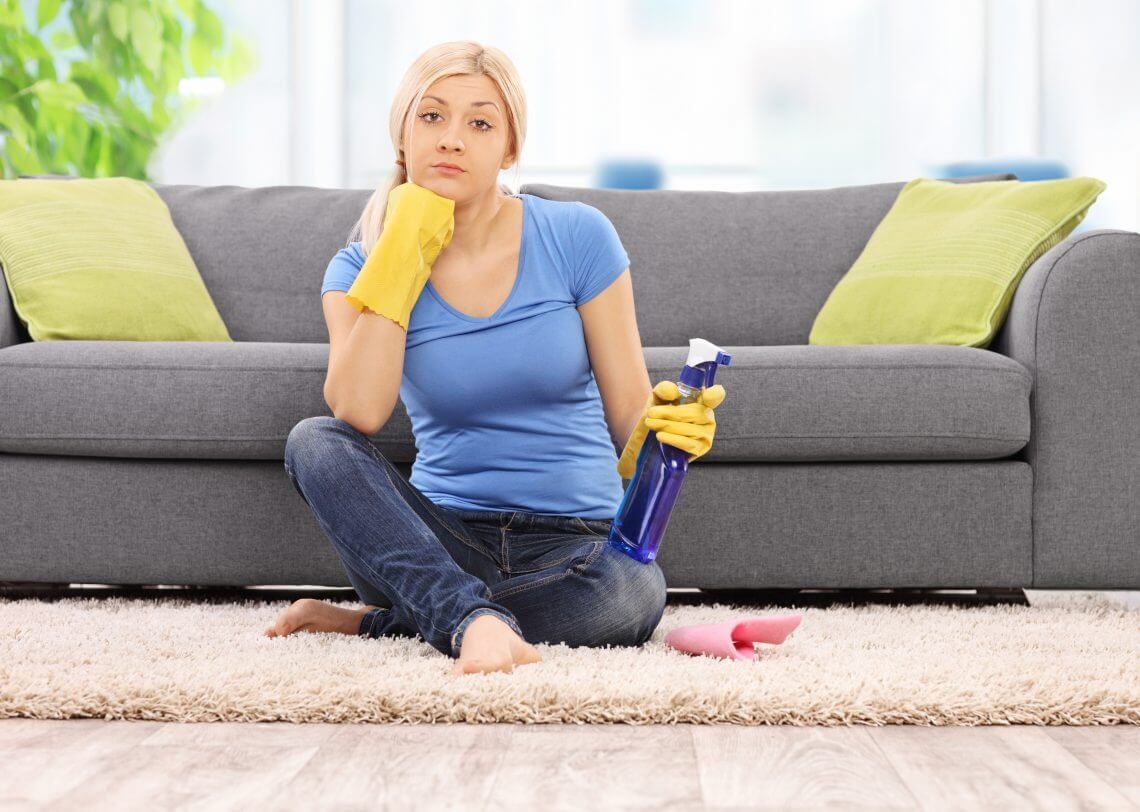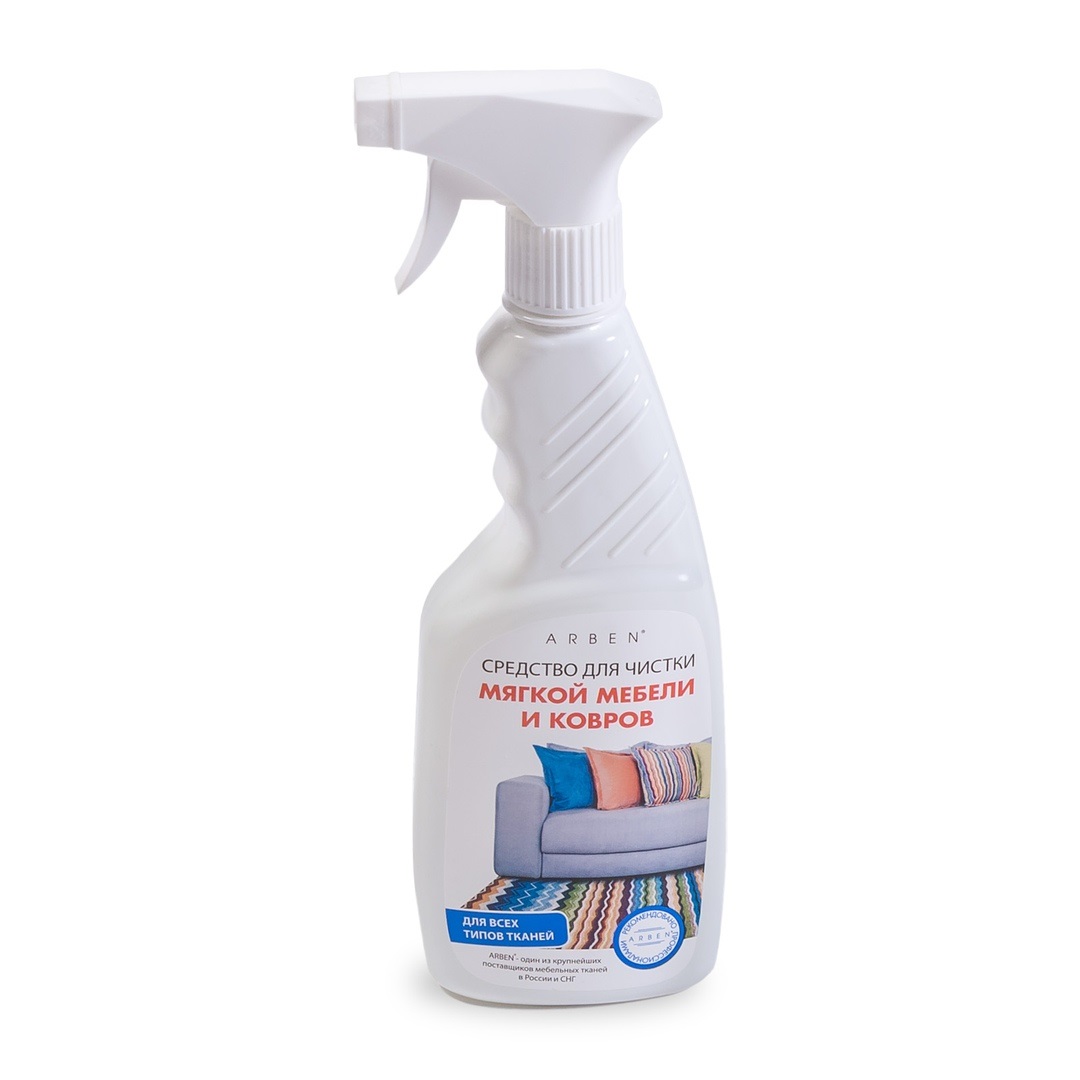Ways to clean upholstered furniture at home
The recipes discussed in the material will help you quickly cope with the task of cleaning upholstered furniture at home. Even with the most careful handling, any piece of furniture used by a person requires dry cleaning once a year and a half. For stubborn stains and odors, you need to have additional tools in your arsenal.

The main contaminants for upholstered furniture include:
- mold
- stains
- bacteria
- pincers

Among the cleaning products, folk and professional ones are distinguished, more about them below.
Important! Before using any product, apply a small amount to the interior of the furniture. This will help you check if cleaning will damage the paint on the surface of the material.

Furniture cleaning can be divided into:
- preventive
- local

Prevention allows you to keep the furniture fresh, while local cleaning is required when the upholstery is dirty and the stain cannot be removed without special fluids. As protection and prevention of the formation of dirt, replaceable covers that are easy to wash are great help.

To clean the upholstery, you can use folk recipes, or professional products sold in department stores and supermarkets.
Folk remedies for cleaning dirt
For many years of using upholstered furniture, mankind has accumulated a huge number of the most diverse folk recipes. Some of the most popular and easy-to-use furniture cleaners include:
- soda
- vinegar
- hydrogen peroxide
- dish liquid
- soapy water
- ammonia
- lemon juice
- mechanical knocking out
It must be remembered that the best home remedy for cleaning upholstered furniture is one that can deal with a stain without harming the upholstery. Further information will help you understand how to clean upholstered furniture at home using folk remedies.
Soda and vinegar
With this solution, you can clean the fabric of many stains from odors, including those that have aged. Apply a pre-mixed solution of vinegar with soda to the stain and leave it on the surface. After 30 minutes, add some more baking soda to enhance the effect. When baking soda and vinegar interact, a chemical reaction occurs that affects the stain. Remains of the stain are removed with a solution of laundry soap with hydrogen peroxide.

This sequence of actions not only helps to remove stains, but also does not leave behind harsh odors. In addition to removing stains, the soda-vinegar solution perfectly refreshes the tone of the fabric dye.Therefore, there are often cases when, after removing individual stains, inspired by the effect, they carried out a comprehensive cleaning of all furniture in the same way.
Note! When working with this solution, it is recommended to use rubber gloves to protect your hands.

Purification with hydrogen peroxide
To obtain a working solution, add 20 drops of hydrogen peroxide and a few drops of dishwashing detergent to one liter of water. Foam the resulting solution and apply the foam to the dirt. We actively treat the stain with a brush, wash off the solution with a regular rag. This method works best on non-greasy stains on light-colored surfaces.

Note! Hydrogen peroxide is a chemically active substance and an increase in its concentration in solution can lead to fading of the surface of the cleaned cloth.
Nevertheless, peroxide solution is an excellent tool not only for cleaning, but also for disinfecting the lacquered surfaces of chairs, armchairs and even sofas.

Dishwashing liquid
The product itself does an excellent job of removing grease stains, and if you make active foam from an aqueous solution of liquid soap, you can effectively renew the surface of the furniture. It is recommended to repeat the processing several times a year, this can not only preserve the original appearance of your furniture, but also remove accumulated dust from the filler.

Cleaning in this way can be combined with steam or vacuum cleaner.

Note! Cleaning with dishwashing liquid does not have the same effect on all types of stains. It is ineffective to use a foam solution against old stains from fruits or vegetables, paints and felt-tip pens.
Knocking out
Knocking out is an ideal procedure for proactively keeping your furniture clean. Thanks to this simple method, it turns out to get rid of dust and crumbs remaining in the folds of furniture. It is recommended to put a damp cloth on the upholstery surface before knocking out, which will retain all the knocked out dirt.
Note! This method is more effective for soft furniture fillers, for example, foam rubber or padding polyester.

Soapy water
Soapy water combines the effectiveness of cleaning the surface of the upholstery and the top layer of filler, which most often accumulates microorganisms and mold. Apply soapy water to the upholstery and let it soak for a while.
It is best to remove the solution with a cleaning vacuum cleaner. If this is not at hand, it is important to prevent the solution from absorbing into the upholstery and furniture filler. In this case, the process of complete drying can be delayed and even exacerbate the development of mold and mildew inside your furniture.

Ammonia
Ammonium, as an alcohol-containing agent, copes well with grease stains, which include traces of paints, markers or felt-tip pens. This means that such a tool should always be in service in a house with small children. The greatest efficiency is obtained by cleaning furniture with a solution of 1 liter of water, 45 ml of ammonia and 30 ml of vinegar. The liquid formulated in this way better penetrates deep into the stains and completely removes fat deposits.

Important! Alcohol and vinegar can lighten some paints, so we carefully check the causticity of the solution on the inside of the upholstery before use.

Lemon juice
Lemon juice is as effective as vinegar in helping to remove unpleasant odors and simply refresh the furnishings with its scent.We dilute the following liquid - 150 ml of lemon juice in 500 ml of water. It is most convenient to apply the solution with a spray. After processing, the surface is cleaned with a soft absorbent sponge. Lemon juice, as a weak acid, refreshes the upholstery surface.

Features of cleaning upholstery made of various materials
For some types of upholstery, mechanical cleaning methods are better, while others simply cannot be cleaned without special solutions and agents.

The best result after mechanical cleaning is shown by velor - even ordinary vacuuming or knocking out can return its original appearance. During chemical processing, it is not recommended to moisturize the fabric too much; dry cleaning with chemicals is best suited for such purposes.

It is strictly forbidden to clean the flock upholstery with any alcohol or solvents. Only an aqueous solution, preferably with a gentle agent. It is recommended that you vacuum your flock furniture daily.
It is generally not recommended to use water for cleaning jacquard. It is better to do with dry cleaning.
For other types of upholstery, there are no serious restrictions on the use of cleaning agents.
Effective professional stain removers from upholstered furniture
Along with folk recipes, modern effective means for cleaning upholstered furniture are often used in everyday life.

Note! Carefully study the instructions for each such product, they often contain aggressive substances, and any cleaner may have restrictions on the fabrics used.
Funds can be in the form of powders, gels, or shampoos. Depending on the composition of the product, the time of its exposure to the contaminated surface also changes.

The use of professional products is recommended if it is not possible to carry out cleaning using folk methods.
The most famous commercially available product is Vanish (TM), which can be found at any department store.

What household appliances can you clean
In addition to chemical cleaning, a good result can be achieved using household appliances that are in every home.
With the help of a steam cleaner, it is easy to prepare a stain for subsequent dry-cleaning, to clean and renew the upholstery surface. With such a device, the problem of getting rid of unpleasant odors is easily solved. Due to the additional temperature effect, the steam cleaner kills bacteria and mold, the result is noticeable after the first use, therefore it is recommended for preventive treatments.

Due to the structure of the impact on the upholstery, the steam cleaner helps to clean the fabric of chemical residues, bringing them to the surface.

The washing vacuum cleaner is also an excellent preventive device. Helps to remove light dirt, certain types of stains and harmful organisms from upholstery and filler surfaces. Works great with any aqueous solution.

How to get rid of bad smell
Often the reason for the need for cleaning is not contamination, but the presence of an unpleasant odor. In this case, you can use any of the previously sounded methods. The simplest is the steam treatment. More intense can be called citric acid and ammonia. If none of these methods have achieved the desired effect, you should try using a professional remedy.

Cleaning agents often contain fragrances to help remove odors. Thus, you can combine preventive cleaning and getting rid of unpleasant odors.
All the sounded methods help to understand how to clean upholstered furniture at home from dirt, carry out preventive treatment, or remove unpleasant odors.
Video: several ways to clean upholstered furniture





